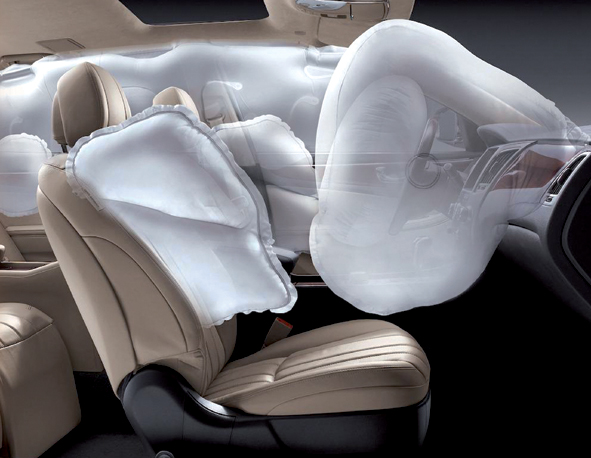 Sales of textile-based automotive airbags are set to increase rapidly after a tough phase during 2008 and 2009 when global sales of light vehicles fell sharply, according to a report from Textiles Intelligence.
Sales of textile-based automotive airbags are set to increase rapidly after a tough phase during 2008 and 2009 when global sales of light vehicles fell sharply, according to a report from Textiles Intelligence.
In 2010 the world market for automotive airbags stood at 258 million units, but by 2017 this figure is predicted to rise to 446 million units, representing an increase of 73.2 per cent.
Front airbags are expected to remain the biggest category of airbag in 2017. However, forecasts for the seven years to 2017 suggest that they will form the slowest growing category, whereas sales of side-impact airbags, inflatable curtains and knee airbags will grow considerably faster.
As a result, the share of front airbags in the total market for airbags will drop from 42.2 per cent to 37.9 per cent between 2010 and 2017, although sales of front airbags are still forecast to increase by 55.2 per cent.
The fastest increase, at 539 per cent, will be in sales of knee airbags. However, these will continue to represent by far the smallest category with sales of just 33 million units in 2017, representing 7.4 per cent of the market.
Sales of side-impact airbags are set to rise by 74.7 per cent to 128 million units, representing a 28.6 per cent share of the market, while sales of curtain airbags will increase by 65.2 per cent and account for a 26.1 per cent share.
Geographically, growth in the mature markets of developed countries is likely to be sustained by new regulations and technological innovation as vehicle production in these countries is still recovering following the global financial crisis.
In the US, the National Highway Traffic Safety Administration (NHTSA) is already focused on improving standards of protection against side-impact crashes. Such improvement is expected to open up new areas of growth, such as inflatable curtains.
The scenario in emerging markets such as Brazil, China and India is very different. Demand for new cars in these countries has been growing significantly in recent years thanks to rising employment levels, economic prosperity and increases in discretionary income.
This has boosted automotive production in these countries and the trend likely to continue as vehicle ownership rates per head are lower than those in developed markets. Indeed, whereas light vehicle production in Japan, Western Europe and the US is forecast to remain below the 2007 levels until at least 2017, production in the rest of the world is set to more than double over the 10-year period.
Rising demand in Asia in particular presents enormous commercial potential for the automotive industry and therefore for the airbags sector.